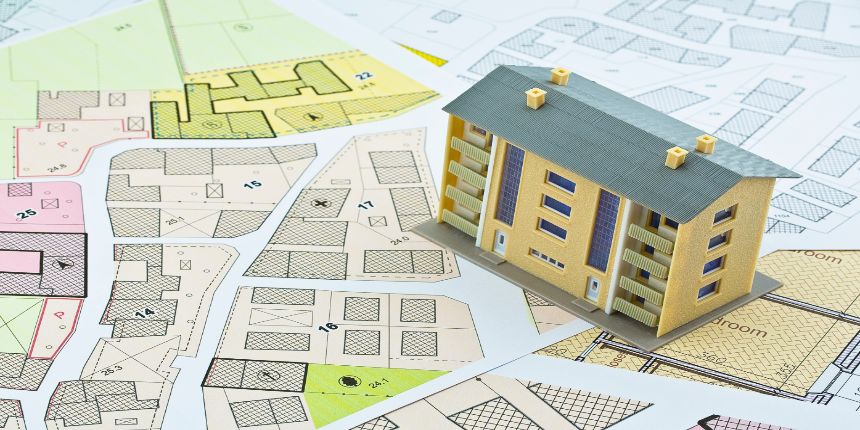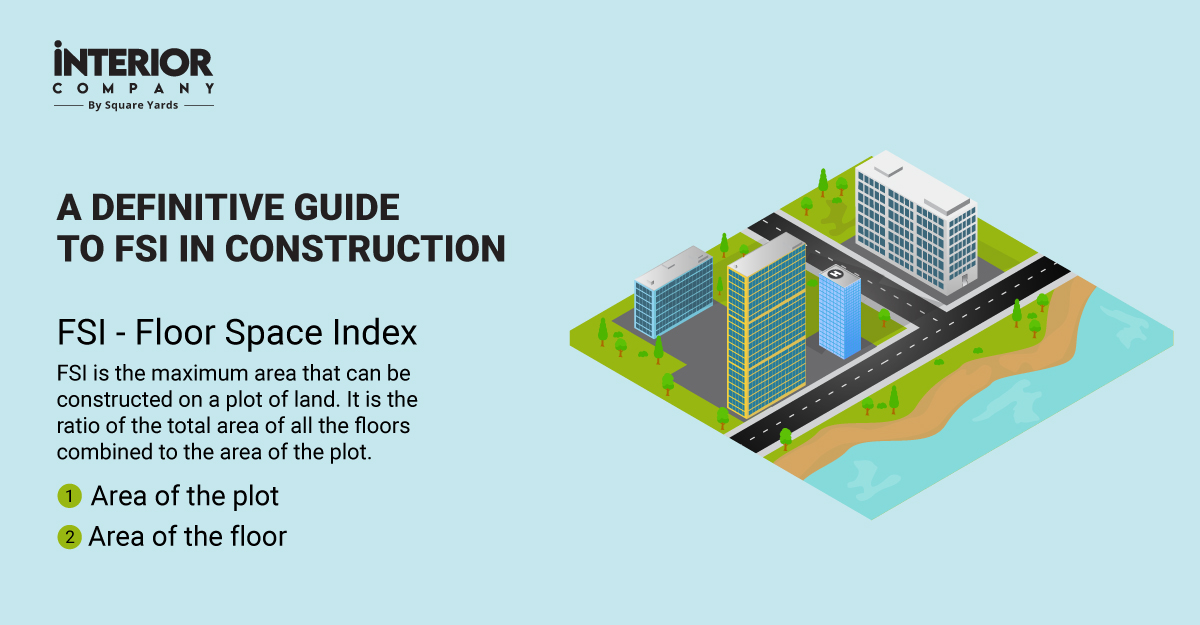What is FSI meaning?
FSI is based on the National Building Code controlled by the municipal or local authorities of the state government. It varies from one city to another and sometimes, in different regions in a particular city. FSI is the ratio of the total built-up area to the total land area of the plot.
The FSI/FAR value depends on:
- Size of the plot
- City Zone
- Type of building ( residential apartments, commercial buildings etc.)
- The width of the adjacent road
- Availability of power, water, and other amenities
The real estate industry has always been demanding a hike in FSI for more construction and profitable margins. Rapid urbanisation has already put pressure because of the sparse land resources, especially in metropolitan cities. The higher value of FSI indicates the development and progress of that particular area.
Also Check: What is Mivan Shuttering Technology in Construction
List of Areas Included in FSI Construction

FSI = Total built-up Area/ Total Plot Area x 100
Permissible Built-Up Area = Plot Area x FSI
Below is the list of areas included and excluded in FSI building construction:
| Area Included in FSI | Area Excluded in FSI |
| Carpet Area or Tenant Area | Exterior Area |
| Staircase | Parking Area |
| Basement, Meeting Room | Balconies |
| Storage Room, Laundry or Rest Rooms | Gardens and Patios |
| Mechanical Equipment Area | Outdoor Courts |
FSI Formula
FSI ( Floor Space Index), also known as FAR( Floor Area Ratio) is regulated by the authorities of the state government based on city zone, type of building and other amenities.
FAR = Gross Floor Area /Total Plot area
FSI = Gross Floor Area / Total Plot area x 100
It is used to calculate the built-up area of the site and also the permissible number of floors that can be constructed in the building.
- If the value of FAR is less than 1, it means a sparse type of construction.
- If the FAR value is 2.0, it suggests a multi-storey building.
The notion of FAR and FSI was introduced in America to control building regulations, while both terms are unified development codes in real estate. However, in India, FAR is commonly used, whereas, in other countries, people use the FSI more frequently.
Also Read: What Should be Your Ideal Living Room Size
FSI Calculation
To understand FSI meaning, let’s assume that you have a 2000 sq. ft. plot on which you want to build a structure, and the zone FSI of that area is 2.
Total usable floor area- 2000 x 2= 4000 sq. ft.
This means the builder can construct 4000 sq. ft. of floor area on a land of 2000 sq. ft by constructing multiple floors.
Number of Floors allowed = (Total Built-Up Area)/ (Maximum Plot Coverage)
Importance of FSI in Construction
FSI aids in the planning and development of cities dividing the land into appropriate zones to restrict density. It ensures controlled construction in all sectors, such as railway stations and commercial and residential buildings and offers a clear distinction between built-up space and open spaces.
Furthermore, local municipal corporations allot FSI accordingly to control the population of a particular sector. For instance, if the FSI of an area is 0.5, then only half of the plot area can be constructed to decrease the zone density. Higher permissible FSI means more floors, a dense congregation of buildings in a sector, and fewer open spaces. Therefore, a disciplined check on FSI by authorities will mitigate the prices and ensures safety and quality of life.
How Does Floor Space Index Impact Property Price?
The FSI value influences the property rates as it indices how much of the land can be utilised and whether the building can be multi-storeyed. FSI value regulates by the government authorities and doesn’t remain the same for all locales as it changes from area to area.
When the value of FSI increases, the chances of getting better utilisation, land prices, and housing stock shoot up. For a builder, the higher value means more construction and more profitability. This situation comes in handy in locations where there is an outrageous need to provide housing for all. Thus, if the FSI value increases, the property rates surge in the market.
What is Premium FSI or Fungible FSI?
The Floor Space Index can be increased under certain conditions, regardless of zone, location, and building type. If you need to extend the permissible FSI, you have to pay a premium amount to the government to carry out the development. The extended development over the allowable limit is called the Fungible FSI. To avail of this FSI limit, the adjoining road of the building or property must be at least 30 feet wide.
| Road Width | Premium FSI |
| 30-40 ft | 20% |
| 40-60 ft | 30% |
| Wider than 60 ft | 40% |
For example,
Let’s assume you have a 1000 sq. ft. land along a 30 ft. road, and the FSI/FAR is 1.5. With this, you can avail of premium FSI 20% to build up the additional floor area.
Built-up Area- 1000 x FSI x Premium FSI
1000 x 1.5 x 20%
1800 sq. ft.
In Conclusion
Floor space Index (FSI) or FAR is the ratio of the total built or floor area to the plot area. This unified development code is regulated by the Municipal corporations or government authorities to maintain a balance between sustained and planned growth and ensures a definite city skyline. For any construction-related queries, reach out to the experts at Interior Company.
